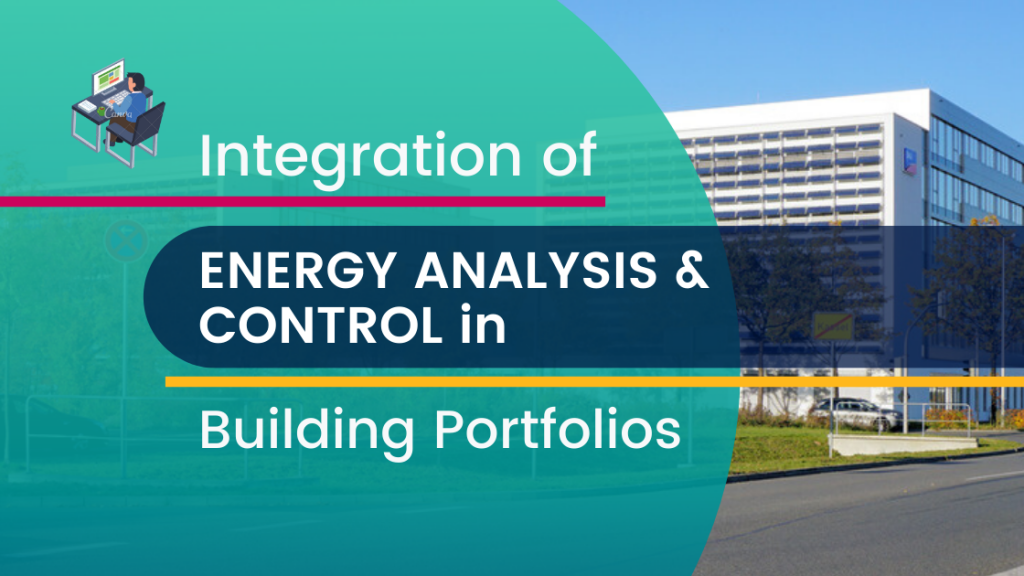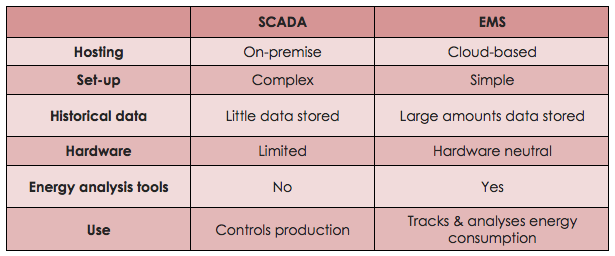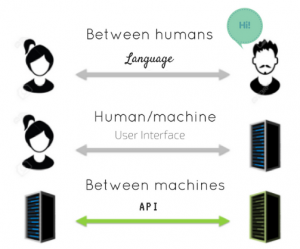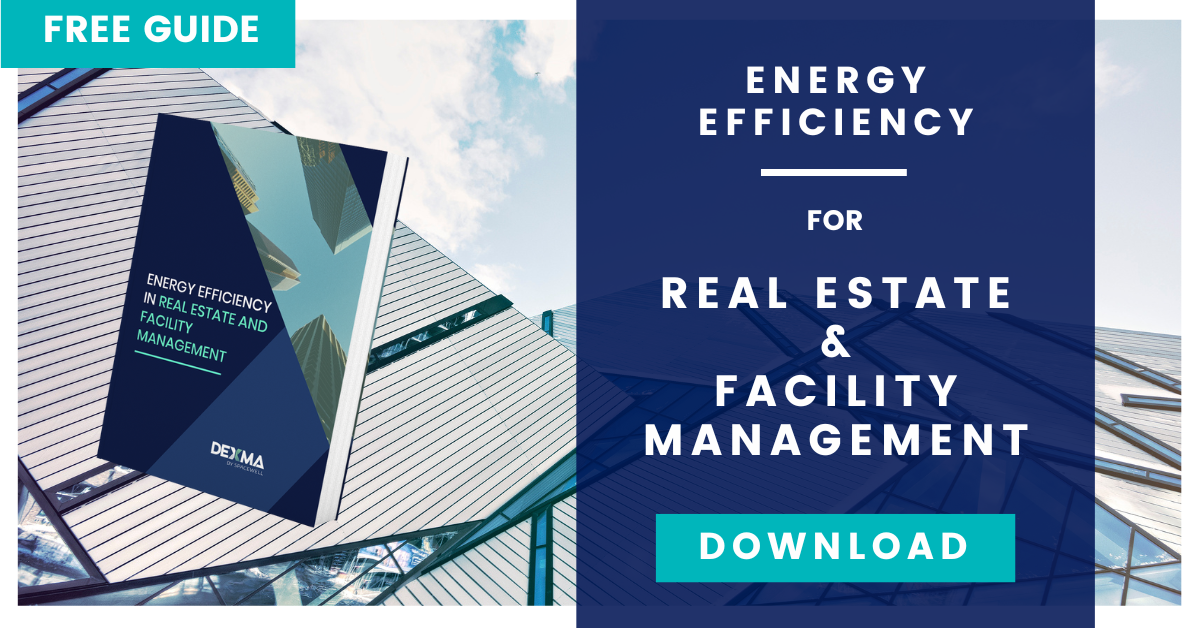When we talk about energy management, not only does it involve a thorough analysis of the energy consumption that is produced in buildings, but we must also carry out energy and functional control. So, how do we integrate the energy analysis with Building Portfolio Control?
Discover the types of control in buildings, and learn about advanced energy control technologies in this article:
In energy management the word “control” is used today to refer to two types of process:
Functional Control & Automation |
Energy Control |
|---|---|
| This refers to predetermined “orders” with which a system is configured. It is expected that it will do the same every day. | Advanced smart tools that control the building’s energy behaviour in real time. |
| Example: configure the HVAC system’s software (BMS) to turn on the air conditioning at 8 am and turn it off at 7 pm. | Example: my Energy Management System knows that today will be a very hot day. Therefore, it decides to activate the free cooling of my HVAC devices between 6 am and 8 am so fresh air comes in from outside, before the HVAC starts the cooling. |
Automation and Control: Differences between BAS, SCADA, BMS and Energy Management Systems
As you can see, they are two radically different concepts of control. The control of automations and simple functions has been seen for many years in building portfolios.
This control is usually carried out through “automation” technologies. They are usually known as BAS (Building Automation Systems). They are NOT the same as an EMS:
What if my building has a SCADA? Can I not control energy with that? Unfortunately the answer is NO.
It is a common mistake to think that a SCADA can be used to manage, analyse and control the energy consumption of the building. We are talking about two technologies with completely opposite DNAs:
What is an API?
API stands for Application Programme Interface. It is basically a code that allows computer programmes to talk to each other.
API son las siglas, en inglés, de Application Program Interface. Es básicamente un código que permite que los programas informáticos hablen entre ellos.
Software development changed forever when the REST and SOAP standardisation protocols reached the market almost 20 years ago. In the energy sector, this change had a massive impact. Suddenly we could send and receive standardised information from any energy distribution company device or meter, in real time.
If an API is open it means that it is published on the internet and anyone can use it to build applications “on top” of it or integrate existing applications to extend the original functionality of the platform with new tools.
For example, DEXMA’s energy management software is one of the few that offers an open API to analyse energy and other data. So you can even connect an ERP with DEXMA Platform.
Software development changed forever when the REST and SOAP standardisation protocols reached the market almost 20 years ago. In the energy sector, this change had a massive impact. Suddenly we could send and receive standardised information from any energy distribution company device or meter, in real time.
If an API is open it means that it is published on the internet and anyone can use it to build applications “on top” of it or integrate existing applications to extend the original functionality of the platform with new tools.
For example, DEXMA’s energy management software is one of the few that offers an open API to analyse energy and other data. So you can even connect an ERP with DEXMA Platform.
Advanced Energy Control: Bots, Gamification, Demand Response…
Until very recently the concept of “control” in the world of energy management only related to automatisms.
For example, controlling when lights are turned on and off in common areas of a building or being able to remotely programme and operate HVAC machines in a building. Yes, these actions help save energy.
But thanks to new technologies such as artificial intelligence, big data and machine learning, these limitations have been overcome. Today we can offer advanced smart tools that control, in real time, the energy performance of the building.
Let’s review matters and propose some ideas so you can save the maximum energy in your real estate portfolio!
Demand Response in Building Portfolios
Do you know what Demand Response is? It involves adapting the building’s energy needs in real time in order to respond to requests from the grid. For example, in periods of high energy consumption, such as summer, your offices may be at medium/low capacity (because many people are on holiday).
At that time the operator of the grid could send an alert asking buildings to release part of their power consumption. If you say yes, you give the grid capacity so that others can use it and they give you a reward, which is usually a financial one.
In the case of the company that manages portfolios of buildings, demand response has very interesting implications. It is already operating in France and the United Kingdom. Many other countries and markets are working to put it into operation:
For the manager of property portfolios, the opportunity is unique. It can mean:
- Retaining your customers’ contracts for longer. Since you are not only maximising their energy savings, but also making sure they are being paid for that.
- Or, directly, this can be a source of “extra” income for you as an energy manager of those properties.
In addition, there are projects such as RESPOND that are developing the technology necessary so that even residential buildings can take advantage of this energy saving technique.
Proactive Control: Predictive Maintenance, Artificial Intelligence and Bots
One of the keys to the facility management of the future will be proactivity. Many organisations consider the work of the facility manager to be “reactive” (they wait until something doesn’t work and then fix it).
Trends in the sector in recent years, such as predictive maintenance, show that in property management, being proactive will be the key to maintaining business and attracting new customers.
Involving the Tenant and User for Greater Control: Gamification
After ten years of analysing behaviour and energy consumption data in more than 50,000 buildings around the world, we have discovered that the reason why we don’t save more energy is because we don’t want to.
Are we talking about you? No, we already know that you want to save as much as possible and reduce the energy cost of your buildings. That will increase your margins. And we want this too.
We are talking about all the users or “inhabitants” of those properties. So why don’t we save? Well, energy efficiency is usually the lowest priority for a bank or administrative worker.
Thanks to gamification, we can change this pattern and convert efficiency and energy savings into something entertaining. Gamification consists of the application of game and competition dynamics to a group of users to encourage the use of a technology and the adoption of new habits.
Gamification will be vital for real estate and facility management companies that want to apply energy management plans and encourage their tenants to follow them and save energy.
The FEEdBack project is a pioneer in the application of gamification to energy saving. Especially in projects for housing or shared offices.
The idea is simple. According to DEXMA data, in corporate buildings, it is possible to save between 8% and 15% simply by applying behavioural improvements, which also have a virtually zero cost. How can we induce this behavioural change? For example, motivating staff and making them compete with each other for mutual benefit. That is, gamifying the energy use behaviour.
If the information you’ve found in this article about energy efficiency control in building portfolios has left you wanting more, why not download our special guide for the Real Estate and Facility Management sector?
If you want to subscribe to be updated on the latest publications you can do it here.







